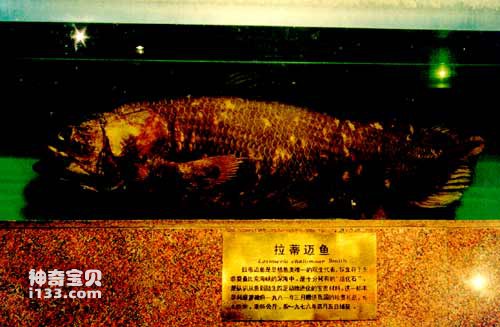For a long time, the scientific community has believed that lobe-finned fishes, including coelacanths, were extinct from the earth as early as the early Cretaceous period. Humans can only understand this type of fish-shaped vertebrates through fossils in the strata. The leopard took a peek. In the late 1930s, a young lady named Latimer broke this "dead silence" and discovered the first "living" coelacanth.

Latimer
Miss Latimer was working as an assistant to an anatomy professor at the University of Rhodes in South Africa. She often went to the fishing port on the seaside to buy some fish for the professor to make specimens. In late December 1938, Christmas was approaching and the professor went home for vacation, but Miss Latimer did not stop working because of the approaching Christmas. On the 22nd, she came to the fishing port again and looked through the baskets of fish just caught from the sea. Suddenly, a fish caught her attention. The fins of ordinary fish (including cartilaginous fish and all previously known bony fish) are directly grown on the body, but the fins of this fish are different. Its fins are grown on each arm or leg. On similar appendage-like structures, these appendage-like structures are then connected to the body. Miss Latimer immediately realized that this fish was unusual - wouldn't a fish with such a structure be a good evidence that tetrapods originated from fish-shaped vertebrates? Miss Latimer immediately bought the fish from the fisherman. However, the school was on holiday at that time and the laboratory had been closed, so the formalin and other chemicals used to soak and protect the specimens could not be taken out. In desperation, Miss Latimer bought a few kilograms of salt and smeared the fish inside and out like salted fish - this was the only way to protect and preserve it under the conditions at the time.
After Christmas, when the professor came back from vacation, Miss Latimer excitedly showed him the fish. At this time, due to dehydration, dryness and hardness under the action of salt, almost only the skin and the fish bones inside are left of this precious "salted fish". Even so, the professor immediately realized the significance of this fish and conducted research, believing that this fish should belong to the coelacanth suborder of the order Lobofin. An animal that was originally thought to have been extinct for 120 million years (early Cretaceous period) was suddenly discovered to still be living on the earth, and this animal is also related to the ancestor of all tetrapod vertebrates, including us humans. How can it not make people feel excited! In order to commemorate Miss Latimer's significant contribution to science and the treasure house of human knowledge, the professor named the fish and the species it represents Latimer fish.
In order to obtain more and better Latimer fish specimens, the professor advertised a reward: whoever could catch another Latimer fish and send it to him for research would receive a bonus of 100 pounds (which was a large amount of money at the time). ); He also posted many posters about Latimei fish in the local area to attract the attention of fishermen. However, the Latimei fish was so rare that it was not until 1952, 14 years later, that there was information that fishermen had caught the first fish in the waters near Anjuan Island in the Comoros Islands northwest of Madagascar. Two Latimer fish.
When the news reached South Africa, the then South African Prime Minister immediately ordered to send warships and military aircraft to retrieve this precious fish. When the plane carrying the second Latimer fish landed at Cape Town Airport, the capital of South Africa, the Prime Minister of South Africa went to the airport to greet him. It can be seen how valuable Latimei fish is. At that time, the first thing he said was: "Oh, our ancestors turned out to be like this."
Since then, Latimei fish have been continuously discovered, but so far, only 200 have been found in the world, and their distribution area is limited to the waters near the island of Madagascar in southern Africa.
The reason why Latimer fish is precious is not only because of its scarcity and narrow distribution area, but more importantly because of its scientific significance. From this century until the 1980s, the scientific community believed that the bony fishes among the lobe-finned fishes were the ancestors of terrestrial tetrapods, and that Latimei was a close relative of the bony fishes. The discovery of its living species , undoubtedly provides important anatomical evidence for studying the evolution of vertebrates from water to land. Now, although Chinese scholars have rejected the theory that bony fishes are the ancestors of tetrapods, and Latimei fish is no longer a direct relative of the ancestors of tetrapods, Latimei fish is important for understanding coelacanths and even coelacanths in general. The anatomy, living habits and evolutionary relationships of finned fishes are still of great significance. Therefore, Latimei fish is still a precious "living fossil" for studying biological evolution.
In 1982, the Comoros government donated a precious preserved specimen of Latimei fish to my country. This Latimei fish specimen, the only one in China, is preserved and displayed in the first-floor exhibition hall of the Chinese Paleontology Museum, a popular science garden open to the public at the Institute of Vertebrate Paleontology and Paleoanthropology, Chinese Academy of Sciences.
animal tags:
We created this article in conjunction with AI technology, then made sure it was fact-checked and edited by a Animals Top editor.